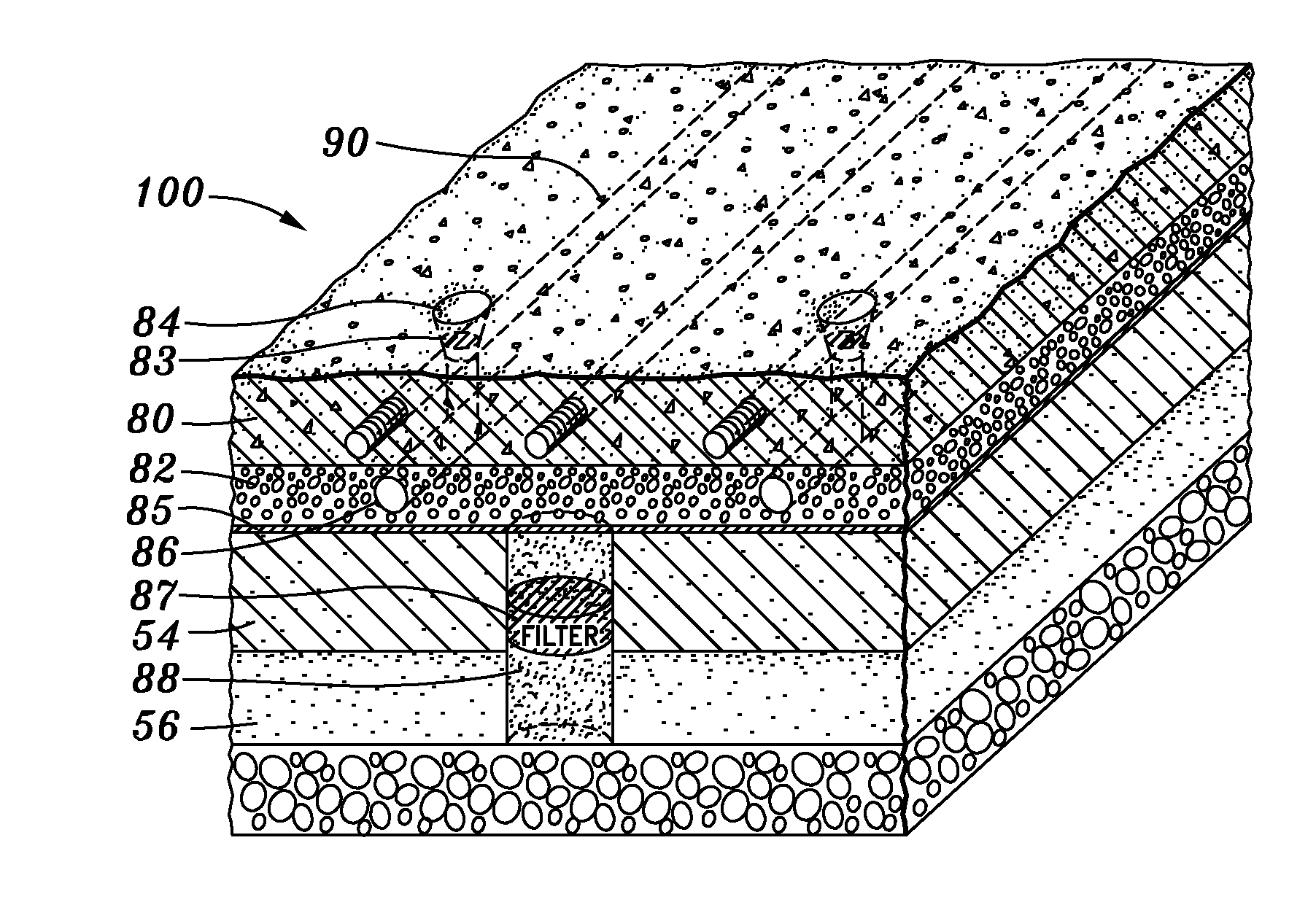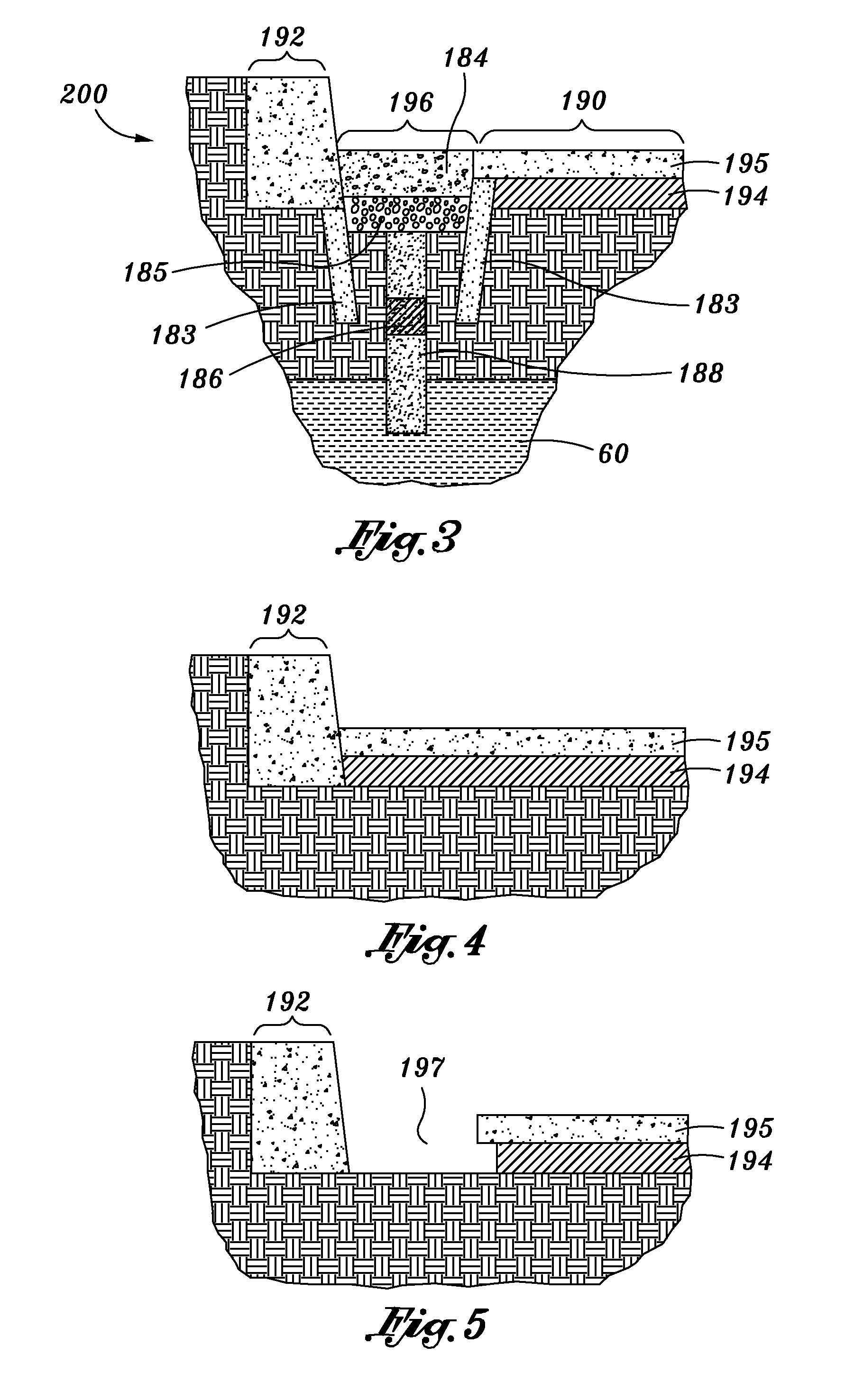Aquifer replenishment system with filter
a replenishment system and filter technology, applied in the field of concrete structures, can solve the problems of not giving much consideration to replenishment, depleting supply, and supply not being renewed as quickly, and achieve the effect of increasing porosity
- Summary
- Abstract
- Description
- Claims
- Application Information
AI Technical Summary
Benefits of technology
Problems solved by technology
Method used
Image
Examples
first embodiment
[0028]Referring now to FIG. 2, the present inventive concrete paving system 100 is shown. Situated above clay layer 54 is an aggregate leach field 82 comprised of sand and gravel particles. One embodiment may additionally include a fabric liner 85 disposed between the clay layer 54 and the aggregate leach field 82. The fabric liner 85 may provide soil stabilization as well as enhance the filtration.
[0029]Above aggregate leach field 82 is a pavement layer 80, which by way of example only and not of limitation, is concrete composed of Portland cement and an aggregate. Pavement layer 80 may be reinforced with any reinforcement structures known in the art such as rebar, rods and so forth for increased strength. Preferably, the reinforcement structure has the same coefficient of thermal expansion as the pavement material, for example, steel, where concrete is utilized, to prevent internal stresses in increased temperature environments. By way of example only and not of limitation, paveme...
second embodiment
[0040]With reference to FIG. 3, the aquifer replenishing system 200 is shown, including an elevated curb section 192, a gutter section 196, and a road pavement section 190. Road pavement section 190 is comprised of a pavement surface 195, which by way of example only and not of limitation, is architectural concrete, asphalt concrete, or any other paving material known in the art, and is supported by base course 194. Base course 194 is generally comprised of larger grade aggregate, which is spread and compacted to provide a stable base. The aggregate used is typically ¾ inches in size, but can vary between ¾ inches and dust-size.
[0041]In accordance with the present invention, gutter section 196 has a porous concrete gutter 184 in which the top surface thereof is in a substantially co-planar relationship with the top surface of pavement surface 195. Optionally, porous concrete gutter 184 is supported by base 185 which is composed of similar aggregate material as base course 194. Furth...
PUM
| Property | Measurement | Unit |
|---|---|---|
| porosity | aaaaa | aaaaa |
| permeable | aaaaa | aaaaa |
| permeability | aaaaa | aaaaa |
Abstract
Description
Claims
Application Information
 Login to View More
Login to View More - R&D
- Intellectual Property
- Life Sciences
- Materials
- Tech Scout
- Unparalleled Data Quality
- Higher Quality Content
- 60% Fewer Hallucinations
Browse by: Latest US Patents, China's latest patents, Technical Efficacy Thesaurus, Application Domain, Technology Topic, Popular Technical Reports.
© 2025 PatSnap. All rights reserved.Legal|Privacy policy|Modern Slavery Act Transparency Statement|Sitemap|About US| Contact US: help@patsnap.com



